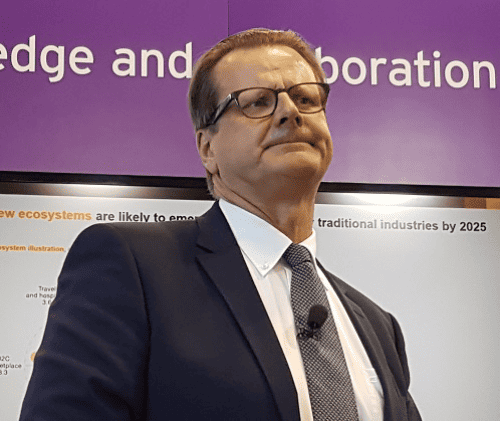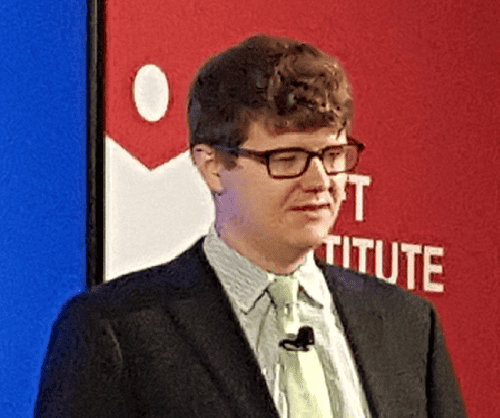CFOs and corporate banking vendors are looking at end-to-end digitization and technology solutions to make payments more efficientand effective.

The banking and payments industry’s global conference Sibos, held in Toronto this past week, left the mid-market corporations with food for thought. While the conference saw discussions on familar trends and challenges such as cyber security, cash management, digitization and integration, it was the mid-market that was being spoken to and targeted in a big way at the conference.
One of the main challenges facing the corporate banking market (towards their mid-market clients) has to do with the legacy environment in which they operate. “Most of the systems are very fragmented and there are multiple applications in multiple channels,” said Oliver T. Bussman, founder and managing partner with Bussman Advisory, “so from a customer perspective the experience is limited.”
So where has this led the industry? “If you look at the environment from a corporate banking perspective, the most effort and resource is spent on the back office. End-to-end digitization of services in the corporate banking is [still] very limited,” added Bussman. The payments industry is looking at ways to help CFOs and corporate banking vendors deal with technology issues and how payments can be made more efficient, and effective for the end user.
One of the key trends around the theme is “letting your audience guide your message.”
Shane Marsh, head of financial institutions transaction banking with ANZ, noted that it is important to first understand there are different types of clients for the banking and payments industry. There are corporate but also individual consumers. “There are certain things that cross all customer types,” he noted. “Clients want to know transparency (fees, status of payments, rates etc.), speed, certainty of value, costs and the end-to-end experience in terms of making their payments.” In order to do that, it is important to speak to the clients to understand their needs, which can then be integrated back into the services being offered to corporate finance and other customers, he added.
Global Payment Innovations & Technology
One initiative that has aided in this effort to be more transparent is the “gpi” or the global payments innovation developed by SWIFT. This service has more than 110 transaction banks from Europe, Asia Pacific, Africa and the Americas sending cross-border payments under a standardized system. The focus has been on B2B payments that are transparent and allow for end-to-end tracking.
“It’s important to realize that at the core of gpi you will solve a lot of pain points for corporate and banks as well,” said Thomas Moberg, global product and process manager with Nordea.
But something that has not yet been standardized, and came up during the Sibos conference, has to do with Distributed Ledger Transition (DLT). Vinay Mendonca, global head of product and proposition with HSBC, explained, “the time is right to get the banks to standardize this (DLT).” He added that while there was some standardization because of SWIFT initiatives, data and documents for banks and trade finance still needed work. “We need to also understand the requirements of banks and different user personas whether they are brokers, sales guys and treasures, of course. Maybe DLT will force this issue [of standardization] that we haven’t been able to figure out for the past 100 years or so.”
Sukand Ramachandran, core member of the Financial Institutions and Technology Advantage practices with the Boston Consulting Group, feels DLT, transactions and/or standardization must consider timeliness. There was a time, he added, where the shipping time would be greater than the transaction times. And that creates a problem. We need to be in a world where financial transactions are faster than physical transactions and that’s the new order we need to solve.”
Cyber Threats

Overall, the trends towards standardization of trade finance, more end-to-end digitzation and tracking, comes with the very real threat of cyber attack. Again, this trend was much discussed as companies still struggle to deal with cyber threats. Will Carter, deputy director of the Technology Policy Program with the Center for Strategic International Studies, noted as an example, that 50 percent of Brazilians have been victims of fraud in the last five years. As well, Asia’s financial sector is currently the world’s biggest target for cyber crime, although Latin America is not far behind.
Lester Owens, managing director responsible for Wholesale Banking Operations and Corporate & Investment Bank Client Onboarding with J.P. Morgan, noted that institutions need to learn from each other on how best to counter cyber attacks, and look at it from a risk-based approach (rather than trying to solve everything at once). “It’s important to know the pattern [of attackers], understand who you are paying as well as deleting unusual transactions. The more you educate yourself the better off you will be,” he said.



